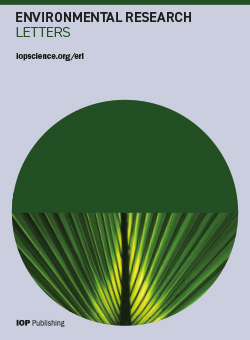Using policy scenarios to assess challenges and opportunities for reaching restoration targets in Brazil’s Atlantic Forest
IF 5.8
2区 环境科学与生态学
Q1 ENVIRONMENTAL SCIENCES
引用次数: 0
Abstract
Brazil’s Atlantic Forest is a global restoration hotspot. Most of the remaining forest areas are degraded and separated by large cities, and agricultural lands essential for national food security. Brazil’s restoration agenda is defined by multiple national and global restoration targets and policies, including Brazil’s Native Vegetation Protection Law (No. 12,651/2012) also known as the Forest Code, which sets minimum levels of native vegetation to be maintained or restored in rural properties. In this study we simulate the impacts of alternative restoration policies addressing targets for Brazil, and explore their impacts on selected terrestrial species and agricultural development potential in the Atlantic Forest biome. Our results show several policy options could result in different restoration amounts and spatial distributions being implemented between 2020 and 2050, but trade-offs between agriculture, biodiversity and rural livelihoods differ. Compared to the baseline scenario (implementation of the Forest Code), a scenario which focuses restoration on small farms (not mandated to undergo restoration under the current legislation) could increase forest area by 6.7 Mha across the biome (139% more than with the Forest Code), while a scenario which maximizes biodiversity gains could lead to an additional 3.9 Mha by 2050 (81% more compared to the Forest Code). We find that our restoration scenarios still allow cropland expansion and an increase in cattle herd, while pasturelands decrease. There are relatively small agricultural production losses under the alternative restoration scenarios when compared to the baseline (up to 14.4%), meaning that cattle ranching intensification is critical to enable large-scale restoration to co-exist with agricultural production. Our scenarios suggest that ambitious restoration targets in the Atlantic Forest biome (up to 15.5 Mha, consistent with existing regional initiatives) could be feasible with necessary improvements in pasture yield and a focus on scaling up support and developing restoration policies for smallholder farmers.利用政策情景评估实现巴西大西洋森林恢复目标的挑战和机遇
巴西的大西洋森林是全球的恢复热点。大部分剩余林区已经退化,被大城市和对国家粮食安全至关重要的农田分隔开来。巴西的恢复议程由多个国家和全球恢复目标及政策确定,其中包括巴西的《原生植被保护法》(第 12651/2012 号),又称《森林法》,该法规定了农村地区应保持或恢复的原生植被的最低水平。在这项研究中,我们模拟了针对巴西目标的其他恢复政策的影响,并探讨了这些政策对大西洋森林生物群落中选定陆生物种和农业发展潜力的影响。我们的研究结果表明,在 2020 年至 2050 年期间,几种政策选择可能会导致不同的恢复量和空间分布,但农业、生物多样性和农村生计之间的权衡有所不同。与基线方案(实施《森林法》)相比,将恢复重点放在小农场(现行法律未规定必须进行恢复)的方案可使整个生物群落的森林面积增加 670 万公顷(比《森林法》增加 139%),而将生物多样性收益最大化的方案可使森林面积到 2050 年增加 390 万公顷(比《森林法》增加 81%)。我们发现,我们的恢复方案仍然允许耕地扩大和牛群增加,而牧场减少。与基线相比,其他恢复方案下的农业生产损失相对较小(最多为 14.4%),这意味着,要使大规模恢复与农业生产共存,牧场集约化至关重要。我们的设想方案表明,大西洋森林生物群落雄心勃勃的恢复目标(最多 1,550 万公顷,与现有的区域倡议一致)是可行的,但必须提高牧草产量,并重点扩大支持范围,为小农户制定恢复政策。
本文章由计算机程序翻译,如有差异,请以英文原文为准。
求助全文
约1分钟内获得全文
求助全文
来源期刊

Environmental Research Letters
环境科学-环境科学
CiteScore
11.90
自引率
4.50%
发文量
763
审稿时长
4.3 months
期刊介绍:
Environmental Research Letters (ERL) is a high-impact, open-access journal intended to be the meeting place of the research and policy communities concerned with environmental change and management.
The journal''s coverage reflects the increasingly interdisciplinary nature of environmental science, recognizing the wide-ranging contributions to the development of methods, tools and evaluation strategies relevant to the field. Submissions from across all components of the Earth system, i.e. land, atmosphere, cryosphere, biosphere and hydrosphere, and exchanges between these components are welcome.
 求助内容:
求助内容: 应助结果提醒方式:
应助结果提醒方式:


